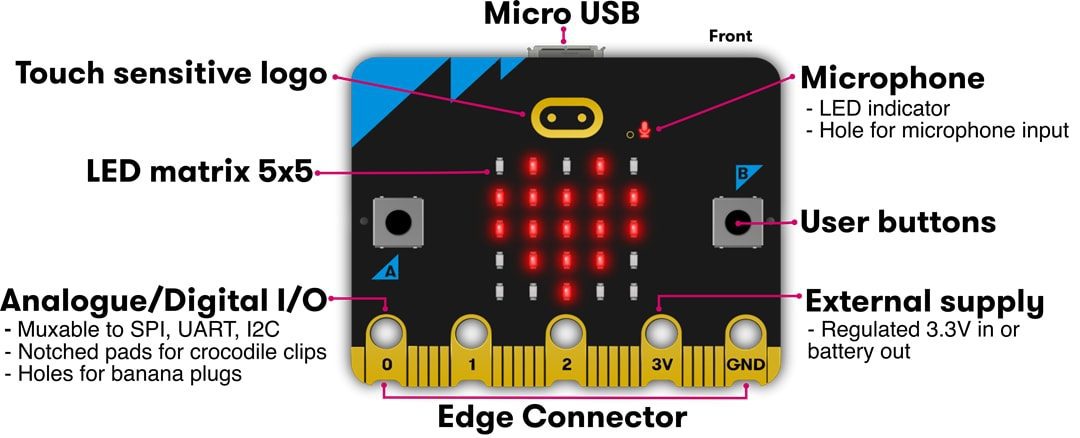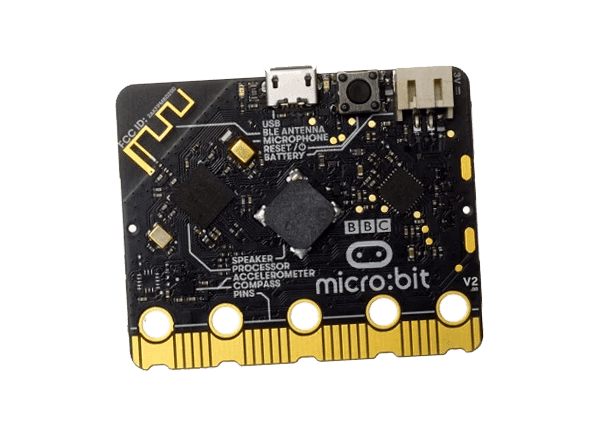- support@husseinkey.com
- livechat
BBC micro:bit V2 is a card-sized, Single Board Computer (SBC) that can be easily coded, customized, and controlled to bring projects to life. Widely used in schools, libraries, and code clubs, the micro:bit V2 is sturdy and easy to program, with built-in BLUETOOTH® for communication, temperature and motion sensing, a microphone, a speaker, and upgraded processing capabilities.
The BBC micro:bit V2 is controlled by the 64MHz Nordic Semiconductor nRF52833 microcontroller with built-in 2.4GHz Bluetooth Low Energy (BLE) wireless networking capability and an on-core temperature sensor. The micro:bit also includes a combined accelerometer and magnetometer chip that provides 3-axis sensing and magnetic field strength sensing. It also includes some onboard gesture detection (such as fall detection) in hardware and additional gesture sensing (e.g. logo-up, logo-down, shake) via software algorithms. A 5×5 LED array can be used as a light sensor, a tiny screen to draw on or display words, numbers, and other information. An onboard MEMS microphone provides a sound input, and a built-in LED indicator on the front of the board shows the user when this is powered. In addition to outputting sound via PWM on the pins, the micro:bit has a PCB-mounted magnetic speaker to which sound output is mirrored. Two programmable buttons and a reset button can be used to control games, send a radio message, or activate the display. A micro USB and two-pin JST connector allow for different power options.
On the bottom of the micro:bit V2 board is a notched edge connector for hooking up external components. The tabs with larger holes are alligator-clip friendly for quick prototyping. The micro:bit can be programmed using a variety of languages, including MakeCode, Python, Scratch, and C++.












